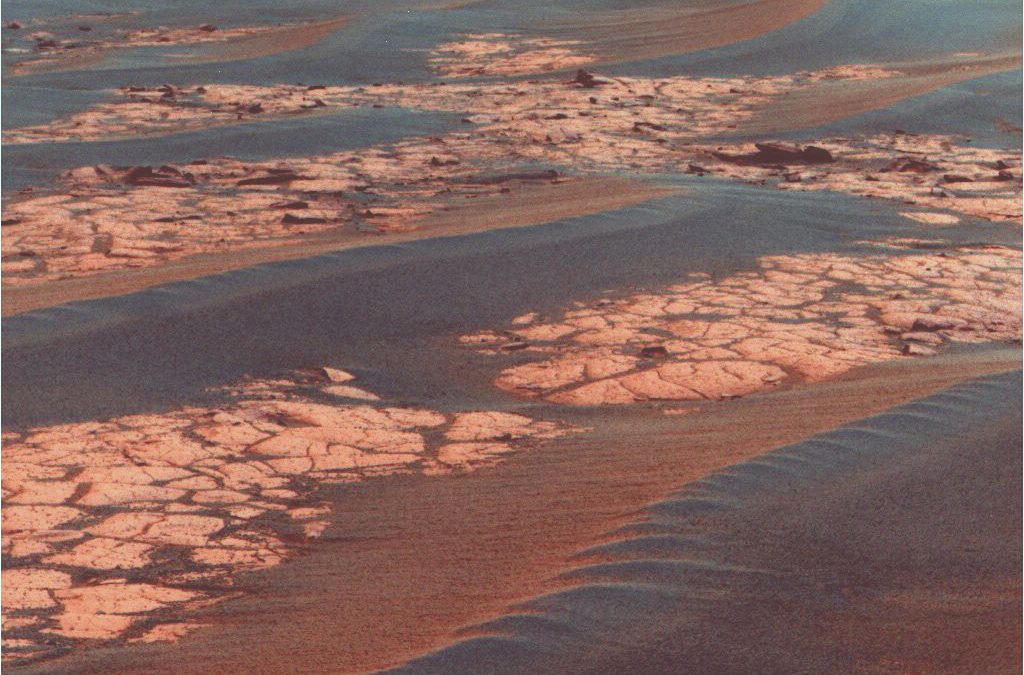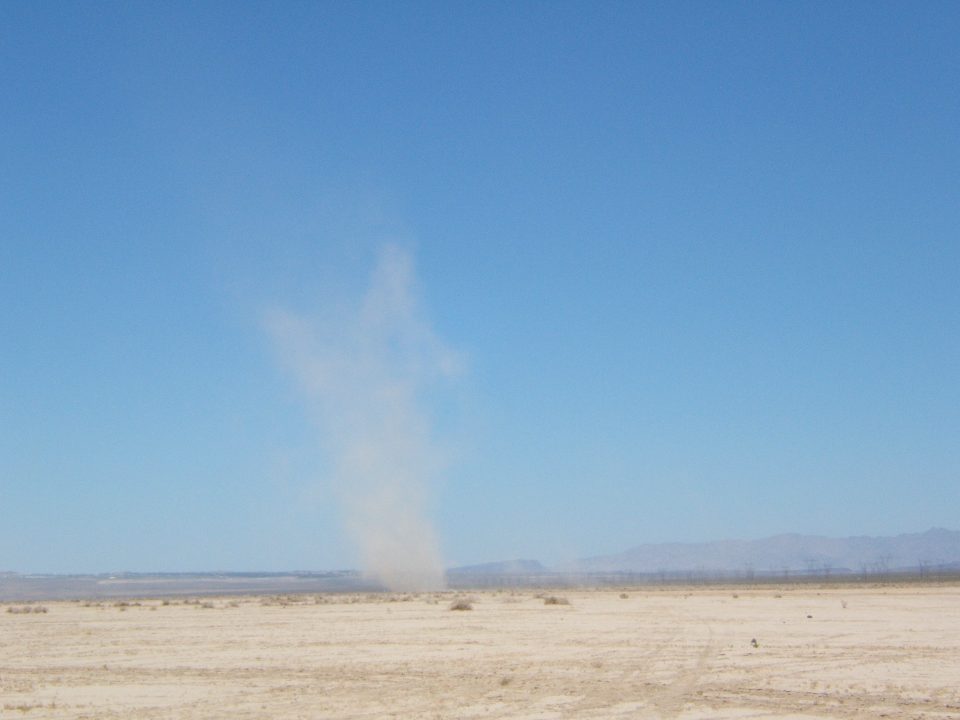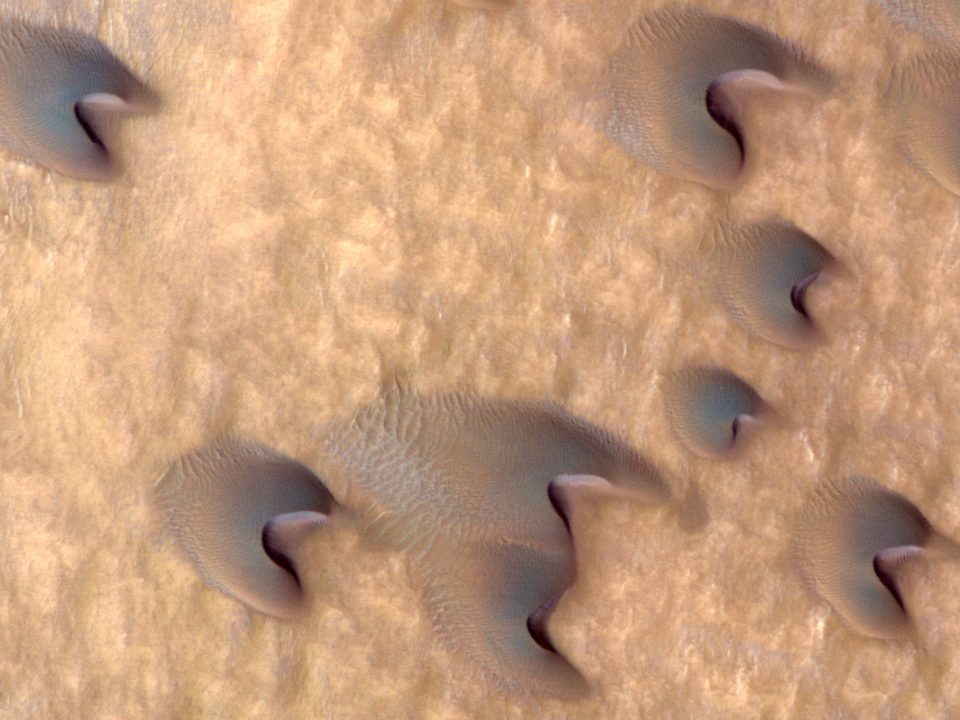My 2018 Paper on Recent Climate Change in Meridiani Planum, Mars (Part 2)

My 2018 paper on recent climate change in Meridiani Planum, Mars (Part 1)
April 11, 2018
My 2018 paper on recent climate change in Meridiani Planum, Mars (Part 3)
April 13, 2018In a previous post, I set the stage for my recently published paper in JGR Planets.
A recap: we’ve got good evidence for a change in Mars’s climate. Widespread ripples in Meridiani Planum formed >200,000 years ago, last migrated westward more than ~50,000 years ago, had their crests reformed into little dunes by a slightly different wind sometime after that, but have been dormant ever since.
Meanwhile, we know that over that same time period, Mars’ orbit and axial tilt have varied, which can affect wind patterns. Moreover, over this period, those same planetary changes led to a stepwise sequestration of atmospheric CO2 into the south polar ice cap, so that we know the air pressure was once higher than it is today. This too can affect wind patterns. All of these parameters can be plugged into a Mars global climate model (MGCM) to see if the model thinks the wind directions and wind strengths vary as these parameters change.
So that’s what we did.
Sensitivity tests: 25 cases with different orbit and axial tilt
First we picked a set of 25 obliquities (Mars’ axial tilt), eccentricities (the circularity of Mars’ orbit), and seasons of perihelion (what time of year Mars reaches perihelion) that represent the range Mars has experienced over the last 400,000 years. We wanted to see what effect each of these parameters had on wind strengths and wind directions in Meridiani Planum. We call this a series of sensitivity tests: we’re not trying to find out what Mars would have been like at any particular time, but rather what trends the model produces under a wide range of possible conditions. We want to know what mattered most: obliquity, eccentricity, or season of perihelion.
Sensitivity tests of 25 GCM cases, showing how the drift potential (DP, a measure of likely sand transport and thus of likely ripple activity) relative to today. The DP is shown versus obliquity (left), eccentricity (right), and season of perihelion (in color on both). Do you see any trends?
The plots above show the “drift potential”, a measure of the total yearly sand transport that each GCM simulation thinks might occur in Meridiani Planum. The present-day GCM case is shown as a bigger diamond – the GCM results were normalized to the present-day case, so that today’s DP has a value of 1. A few things to note:
- Windiness (higher DP values) increases at higher obliquity (when the planet’s axis tilts more). That makes sense: higher axial tilts make for more extreme summers and winters, and it’s easy to imagine that would then make for stronger winds.
- Windiness also increases as the dots turn from purple, through the rainbow, to red (apologies to those with color blindness – I always mean to do a better job picking my plot colors but I always forget). Red dots correspond with orbits in which perihelion occurs during southern hemisphere summer (as it does today – note that the big diamond is also red). That makes sense too: Mars’ southern hemisphere is at a higher elevation than the northern hemisphere, and this makes southern summers more intense (warmer, windier). Making southern summers happen during perihelion will just add to this effect.
- Windiness doesn’t seem to be affected in a systematic way by orbital eccentricity. That’s a little odd. The less circular an orbit is, the higher its eccentricity is. I’d expect a higher eccentricity to lead to stronger seasons, depending on what season corresponded to perihelion. But the plot on the right has no obvious pattern. My suspicion is that there is indeed an impact from eccentricity, but there could be competing factors that cancel out and leave no obvious trend. Most likely this happens beyond Meridiani Planum. So for instance, maybe eccentricity affects the low northern plains in one way, but a big mountain range off to the west in an opposite way, and those two effects just add up in Meridiani to no noticeable pattern. We didn’t look beyond Meridiani in this particular study though. (But we have all of the GCM output in storage, so we can go and have a look. We can look anywhere on Mars to see what the orbit and axial tilt might do. Think of what we could do with more time and funding…).
We also had a look at what these 25 different GCM simulations would do to wind directions. In particular, we wanted to know what the ripples would look like in each case. We know the big ripples are aligned N-S (or 002.5 to 182.5 degrees, to be exact), formed perpendicular to an easterly wind. We know that the smaller superposed ripples are aligned NNE-SSW (or 026 to 206 degrees, to be exact), and they may or may not be transverse to a wind from the SSE (they could be a product of a few different wind directions). Here’s what we found:
Sensitivity tests of the same 25 GCM cases, this time showing how ripple crest directions (vertical axis) may be affected by axial obliquity (horizontal axis) and season of perhelion (in color). The present-day case is the big diamond. The plot is divided into 3 different directions: N-S, NNE-SSW, and NE-SW. The direction of the two sets of plains ripples are shown as dashed lines. Notice how only the GCM simulations with purple and blue dots produce ripple crest directions that aren’t N-S.
Here’s what we get from that plot:
- The present-day GCM simulation winds would make ripples aligned N-S, not too far from the observed ripple crest direction. That’s interesting, but they’re not active today. Bah.
- Lots of other orbital and axial conditions also would make ripples that align N-S. That’s more promising, because last time the ripples were active, it probably happened under a different set of orbital and axial conditions.
- Some of the GCM simulations would produce ripples (see the blue and purple dots) that align NNE-SSW (or even NE-SW). That’s closer to the orientation of those little superposed ripples. That seems to happen at higher obliquities and when the season of perihelion is opposite that today: during northern summer. That’s interesting: so maybe those smaller ripples formed under these conditions.
What else can we try?
We also ran a few other sensitivity tests on atmospheric dust loading and increasing the air pressure. I won’t bog you down with the dust results other than to say it didn’t have a big effect (but you can read the paper to find more information). But air pressure was another story. If you look back at that first plot in this post, you’ll see that none of the cases produced a drift potential that’s much stronger than that today (the wildest case was only 1.14x that today, and most were calmer than today). That suggests that orbital and axial changes aren’t enough to reactivate the ripples, and that maybe the ripples spent most of their time sitting around on the surface doing nothing. We know that’s certainly been the case for the last ~50,000 years, but then what would have made them move before that? And if the only way to make the little NNE-SSW ripples is when the perihelion is opposite that today (the blue and purple dots), how could they have even formed at all when those cases were even less windy than today?

Something else has to have happened. Or maybe the GCM is totally and completely wrong.
Well, we do know that the air pressure used to be higher, back before half of it got stuck at the south pole. More air pressure means a higher density atmosphere. A higher density means there are more CO2 molecules in any given space, and when the wind blows there are more of those molecules scraping the ground. It’s all those molecules scraping the ground that moves sand in the first place to make those ripples (seriously, when you see the wind blow leaves or blow against your car, do you ever picture it as a ton of little molecules trying to ski? Give it a try.)
Next time I’ll talk about what happened when we increased the air pressure.





